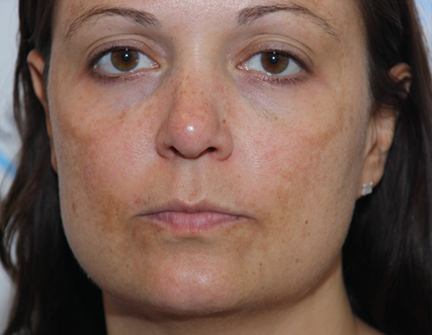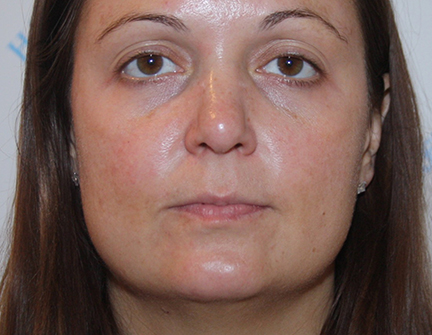Chemical Peel and Dermaplaning
Chemical Peel
Chemical Peels using Harley Street Formulations Peel to Reveal®
Our skin cells become dormant and cellular regeneration slows down as we age, leaving dull, damaged, dead skin cells on the surface. Collagen, elastin, hyaluronic acid and other structural elements vital for skin health start to decrease from our mid-20s, and increasing layers of dead skin and micro-pigmentation cause unevenly toned skins with an irregular texture and enlarged pores.
Although make-up, moisturisers and other beauty products may temporarily conceal some of these signs of ageing, they can not reverse them and may accelerate the process. Peel to Reveal is a modern fusion skin peel multiple superficial to medium peeling agents such as Glycolic, Lactic, Salicylic Acids and TCA treating more than a dozen skin issues at once. Combined with many other performance ingredients including Glutathione, which is a naturally produced powerful antioxidant by the liver, Peel to Reveal is a probably the quickest skin rejuvenation treatment for any skin type with minimal side effects possible.
Duration
Treatment time of 10 – 15 minutes Controllable depth and intensity of treatment
Powerful Antioxidants
Cocktail of powerful antioxidants, immune boosters, natural extracts & skin brighteners
Clearer & Brighter skin
Multiple skin indications treated simultaneously 10 days to clearer, brighter and radiant skin
Downtime
Return to work directly with minimal skin changes apply light cover-up straight after.
https://www.cosmedocs.com/treatments/peel-to-reveal.php
DERMAPLANING
WHAT IS DERMAPLANING
Dermaplaning is a simple and safe procedure for exfoliating the epidermis and ridding the skin of fine vellus hair (peach fuzz).
When clients hear the word dermaplaning, they quickly associate the term with the procedure known as dermabrasion and won’t even consider it as a possible treatment. Dermabrasion is a medical procedure in which the skin is abraded down to the dermis using a whisk like device. There are many complications associated with dermabrasion, including infections and scarring, which is why it is not commonly used anymore. Dermaplaning, on the other hand, is a simple shaving of the epidermis.
Because dermaplaning is a quick procedure with few to no adverse effects, it has quickly gained popularity among cosmetic medical providers across the country. Using a scalpel and a delicate touch, the provider simply abrades the surface of the skin using light feathering strokes.
Dermaplaning is a good choice for patients who have excess vellus hair on the skin. This hair often causes a build -up of dirt and oils in the follicles, so removing the hair gives the patient healthier looking skin.
PROS FOR DERMAPLANING
Making your skin look smoother and helping it absorb cosmetics much faster are among the biggest draws of this procedure. Dermaplaning also removes vellus hairs, or peach fuzz, the fine facial hairs that are usually unnoticeable.
One of the most important dermaplaning pros is the fact that it can help exfoliate your skin in a unique way, that makes both cosmetic procedures and product application much more efficient. Gently running the blade over your skin removes dead skin cells very effectively, and this great exfoliation is also recommended for with broken capillaries.
It can also increase the efficiency of a chemical peel and leaves your skin looking brighter and smoother. The procedure has an instant effect and you’ll find that any cosmetic product that you apply on your skin works better, while makeup glides easier than ever before. Dermaplaning can also make a difference when it comes to fine lines, wrinkles, acne scarring, and superficial hyperpigmentation.
Unlike more aggressive procedures, like microdermabrasion, dermaplaning has very little downtime, and the side effects include leaving your skin a little red and puffy. In some cases, flaking can occur after 48-72 hours, but once that’s out of the way, you will be left with a glowing complexion.
Very rarely the skin can be nicked. This typically heals almost on the spot, remember most men use a blade on their faces almost every day and nick themselves regularly with no long-term effects.
Typical care following your treatment includes the use of moisturizers and sunscreens, and avoiding sun exposure for a few days.



